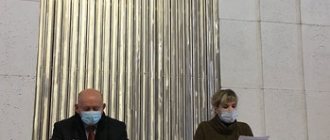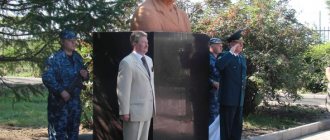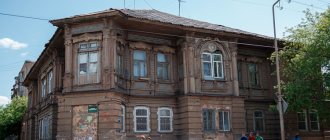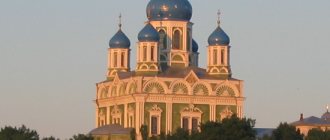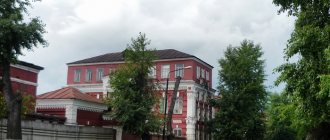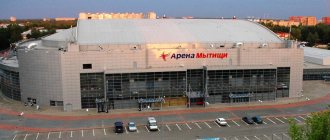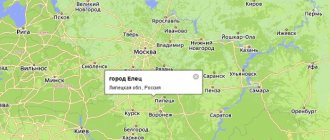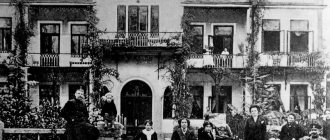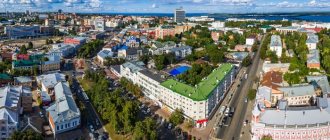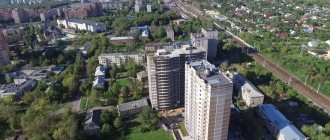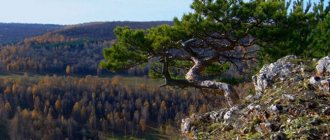For other uses, see Nevel.
Not to be confused with Nevelsk.
City in Pskov region, Russia
| Nevel Nevel | |
| City [1] | |
| Flag Coat of arms | |
| Location of Nevel | |
| Nevel Location of Nevel Show map of Russia Nevel Nevel (Pskov region) Show map of Pskov region | |
| Coordinates: 56°02'N 29°55'E / 56.033°N Latitude 29.917°E / 56,033; 29.917 Coordinates: 56°02'N 29°55'E. / 56.033 ° N Latitude 29.917°E / 56,033; 29,917 | |
| A country | Russia |
| Federal subject | Pskov region [1] |
| Administrative region | Nevelsky district [1] |
| Based | 1504 (Julian) |
| City status from | 1772 [2] |
| Height | 155 m (509 ft) |
| population size (2010 Census) [3] | |
| • General | 16 324 |
| • Evaluate (2018) [4] | 15079 ( -7,6% ) |
| Administrative status | |
| • Capital from | Nevelsky district [5] |
| Municipal status | |
| • Municipal district | Nevelsky municipal district [6] |
| • Urban village | Urban settlement Nevel [6] |
| • Capital from | Nevelsky municipal district [7], urban settlement Nevel [6] |
| Timezone | UTC+3 (MSK[8]) |
| Postal code [9] | 182500, 182503, 182549 |
| Dial code(s) | +7 81151 |
| OKTMO ID | 58620101001 |
Nevel
(Russian: Nevel, Polish: Nevel, Belarusian: Nevel) is a city and administrative center in Nevelsky District in Pskov Oblast, Russia, located on Lake Nevel 242 km (150 mi) southeast of Pskov, the administrative center of the region. Population: 16,324 (2010 census); [3] 18,545 (2002 census); [10] 22,472 (1989 Census). [eleven]
History[edit]
Historical affiliation
Commonwealth 1580-1582 Tsarism of Russia 1582-1617 Commonwealth 1617-1655 Tsarism of Russia 1655-1678 Polish-Lithuanian Commonwealth 1678-1772 Russian Empire 1772-1917 Russian Republic 1917 Soviet Belarus 1919 Soviet Russia 1919-1922 Soviet Union 1922–1991 Russian Federation 1991–present
It was first mentioned in the will of Ivan the Terrible among the cities founded during his reign. [2] Between 1580 and 1772 it changed owners frequently. [2] In 1623, the Polish king Władysław IV Vasa granted him Magdeburg Law. As part of the Polish-Lithuanian Commonwealth, it was located in Polotsk Voivodeship. It finally passed to Russia during the First Partition of Poland in 1772 [12], when it was included in the newly formed Pskov Governorate, registered [2] and became the seat of Nevsky Uyezd of the Pskov Governorate. [ quote
] In 1777 it was transferred to the Polotsk governorship.
[ citation needed
] In 1796, the governorship was abolished and Nevel was transferred to the Belorussian Governorate;
[ citation needed
] from 1802 was part of the Vitebsk province [2]
Former Polish Church of St. Joseph
At the beginning of 1919, it was part of the Belarusian Socialist Soviet Republic. After 1919, Vitebsk Governorate was part of the Russian Soviet Federative Socialist Republic. [13] On March 24, 1924, the Vitebsk province was abolished, and Nevel was transferred to the Pskov province. [2]
On August 1, 1927, counties and akimats were abolished and the Nevelsky District, with the administrative center in Nevel, was created as part of the Velikiye Luki Okrug in the Leningrad Region. [14] It included parts of the former Nevelsky district. [15] On June 3, 1929, the Nevelsky District was transferred to the Western Region. [15] On July 23, 1930, the districts were also abolished, and the districts were directly subordinated to the region. [14] On January 29, 1935, the Western Region was abolished, and the region was transferred to the Kalinin Region, [ citation needed
]and on February 5 of the same year, the Nevelsky district became part of the Velikoluksky district of the Kalinin region [14], one of the districts adjacent to the state border of the Soviet Union.
On May 4, 1938, the district was directly subordinated to the region. [14] From July 16, 1941 to October 6, 1943, Nevel was occupied by German troops. [ citation needed
] On August 22, 1944, the area was transferred to the newly formed Velikolukskaya Oblast. [14] On October 2, 1957, the Velikiye Luki region was abolished, and the Nevelsky district was transferred to the Pskov region. [14]
* Main attractions of Nevel
- Museum of the History of Nevel
Located on Lenin Street.
It was opened in 1993. The museum is located in a building that was a postal station in the mid-20th century. The museum presents three exhibitions to the attention of visitors - “peasant and urban life of the 19-20 centuries”, “Nevel in the Great Patriotic War”, “Nevel urban culture of the 19-20 centuries”. The museum also hosts exhibitions of photographers, artists, artisans and private collectors.
Visitors note that the museum is very interesting, but requires immediate major repairs. This is the problem with all small towns.
- Museum-Estate of Sofia Kovalevskaya
The museum is located in the village of Polibino, 37 km from Nevel. Sofya Vasilievna Kovalevskaya is known all over the world - an outstanding Russian woman mathematician, corresponding member of the St. Petersburg Academy of Sciences, professor at Stockholm University. What Sofya Kovalevskaya managed to achieve as a woman in those days was simply fantastic! In addition, she was an outstanding public figure and writer. She moved to Polibino with her father, retired artillery lieutenant general Vasily Vasilyevich Korvin-Krukovsky in 1858. Sofya Vasilievna lived here from 8 to 18 years old.
It is on this estate that the memorial museum-estate of Sofia Kovalevskaya is located. The house (built in the mid-19th century), an outbuilding and a park have survived to this day. The life of this wonderful and extraordinary woman is extremely rich and interesting. The museum managed to collect a large collection of Sophia’s personal belongings and documents.
The exhibition includes clothing, books, original manuscripts and notebooks, charts, portraits, as well as examples of mahogany furniture from the 18th and 19th centuries. There are many documents from Sweden, America and Germany.
Currently, the main house of the estate is being restored, and the museum is located in the outbuilding.
The museum is located in the Velikoluksky district of the Pskov region, the village of Polibino. Open daily, except Saturday and Sunday, from 10.00 to 17.00.
- Grebnitsky Estate
The remains of the estate are located in the village of Obol (in Belarus), 30 km from Nevel. In the first half of the 19th century, this estate was built by Stanislav Grebnitsky. Once upon a time it was a magnificent two-story mansion in the classicist style.
Also in the estate there was a parochial school, a water mill, a distillery and a wood-chemical manufactory. The Grebnitskys themselves were Polish nobles who moved to Belarus.
Alas, a series of events, time, fires and wars did not spare this wonderful estate. Only part of the main building survived. At the entrance to the main building of the estate, massive palace columns supporting the pediment have been preserved. In the surviving sections of the building you can see beautiful cast iron consoles under the balconies and the remains of ornaments on the walls.
On some sections of the walls there are memorial plaques in memory of the fallen underground fighters. The basement of the building is almost everywhere covered with bricks and earth. But in some places there are passages to small semi-basements.
- Linen plant
From Nevel it can be reached in 20 minutes.
This is truly a gem of this place. It is located in the village of Polotnyany Zavod, on Trudovaya Street. There is a sailing and paper mill built in the 18th century by A.A. Goncharov - great-great-grandfather of N.N. Goncharova-Pushkina.
Surprisingly, time has been kind to this magnificent historical monument of architecture.
In 1718, this Linen-Zavodskaya Paper Manufactory was built by decree of Peter 1.
It was in this estate A.S. Pushkin married N.N. Goncharova, which gives the estate special significance and popularity.
For the 300th anniversary of the estate (in 2022), the Buzeon Paper Museum was opened there. The museum itself is housed in an old industrial building from the 18th century.
Also, in 2022, at the Polotnyany Zavod on the side of Kaluzhskaya Street, a monument to the French pilots of the Normandie-Niemen squadron was erected. On the side of Trudovaya Street, a memorial stone was erected in honor of the deployment of Kutuzov’s Russian army in the Goncharovs’ estate.
There is a park around the estate where artists' exhibitions are sometimes held.
- Blue Dacha
This is an infamous Jewish burial ground. Located near Nevel. In 1941-43, terrible executions of Jews took place here. The Germans drove them away from all the surrounding villages. In total, 2,000 executed Jews - old people, women and children - are buried here.
Before the revolution there was a dacha area here. Among all the dachas was the dacha of the police chief. The police officer's house was painted blue. Hence the name of the Nevelsk ghetto.
The memorial monument was erected by the Jewish community.
In Nevel you can also see the building of the former gymnasium (1904), where the famous philosopher M. Bakhtin taught. It is well preserved and now houses a college.
Many tourists find it interesting to visit the village of Gorbenki, where the Swiss Milk farm is located. Surprisingly, the farming here is actually done by a Swiss family. Her story will be interesting to you.
See Prices on Booking in Nevel =>>
Transport[edit]
Railroad station
Nevel is connected by the intersection of two railway lines. One connects Velikiye Luki with Polotsk (Nevel-1 station), the other connects St. Petersburg via Dno and Novosokolniki with Vitebsk (Nevel-2 station). South of Nevel, both railways cross Belarus.
There M20 highway connecting St. Petersburg and Kyiv passes next to Nevel. Other main roads connect Nevel with Velikiye Luki, with Smolensk via Usvyaty and Velizh, with Polotsk and with Verkhnyadvinsk via Rossony. There are also local roads.
Trinity Church
Trinity Church is the main place to visit for townspeople and visitors. The temple was built in the middle of the 19th century. During this time, the church has changed greatly. A refectory and a bell tower were attached to the building.
There are no bells in the church. This amazing place is worth visiting first!
Location: Commune Square - 2.
Famous people[edit]
- Mikhail Bakhtin (1895-1975) - Russian philosopher, literary critic and semiotician.
- Maria Yudina (1899-1970) - Soviet pianist
- Evgeny Dyakonov (1935-2006) - Russian mathematician
- Philip Goloshchekin (1876-1941) - Soviet politician and revolutionary.
- Manshuk Mametova (1922-1943) - Soviet Kazakh machine gunner, the first Soviet Asian woman to receive the Hero of the Soviet Union medal.
- Aaron Rubashkin (1927/28–2020) was an American businessman of Jewish descent.
- Grigory Voitinsky (1893-1953) - Soviet politician
- Valentin Voloshinov (1895-1936) - Russian philosopher and linguist.
- Konstantin Zaslonov (1910-1942) - Soviet partisan commander, Hero of the Soviet Union.
Blue Dacha
The name “Blue Dacha” conceals something unusual. This place talks about what happened back in 1941-1943. Horrible events took place in this place - this is a real Jewish ghetto. More than 800 people died at this place; they were shot. Now, in memory of those who died, a memorial obelisk has been erected here. Its installation was carried out by the Jewish community. If you are interested in the history of the Holocaust, you should visit this place.
Links[edit]
Notes[edit]
- ^ abcd Law No. 833-oz states that the boundaries of administrative districts are identical to the boundaries of municipal districts. In Law No. 420-oz, which describes the boundaries and composition of municipal districts, the city of Nevel is included in the Nevelsky district.
- ^ abcdef Encyclopedia of Russian Cities
. Moscow: Great Russian Encyclopedia. 2003. p. 293. ISBN 5-7107-7399-9. - ^ a b Federal State Statistics Service (2011). “All-Russian Population Census 2010. Volume 1" [All-Russian Population Census 2010, vol. 1]. All-Russian Population Census 2010 [All-Russian Population Census 2010]
. Federal State Statistics Service. - "26. The size of the permanent population of the Russian Federation by municipalities as of January 1, 2022". Federal State Statistics Service. Retrieved January 23, 2022.
- ^ ab State Committee of the Russian Federation on Statistics. Committee of the Russian Federation for Standardization, Metrology and Certification. No. OK 019-95 January 1, 1997 “All-Russian classifier of objects of administrative-territorial division. Code 58 220”, ed. changes No. 278 / 2015 dated January 1, 2016. (Goskomstat of the Russian Federation. Committee of the Russian Federation for Standardization, Metrology and Certification. No. OK 019-95 January 1, 1997. Russian classification of administrative divisions) (OKATO).
Code 58 220 , as amended by Amendment No. 278/2015 of 01/01/2016). - ^ abcd Law No. 420-oz.
- Federal State Statistics Service. Federal Agency for Technological Regulation and Metrology. No. OK 033-2013 January 1, 2014 “All-Russian classifier of municipal territories. Code 58 620." (Federal State Statistics Service. Federal Agency for Technological Regulation and Metrology. No. OK 033-2013 dated January 1, 2014. Russian classification of municipal territories. Code 58 620.
). - "On the Calculation of Time". Official Internet portal of legal information
. June 3, 2011. Retrieved January 19, 2022. - Post office. Information and computing center of OASU RPO. ( Post office
).
Search for postal service objects ( postal Search for objects
) (in Russian) - ↑
Federal State Statistics Service of Russia (May 21, 2004).
“The population of Russia, the constituent entities of the Russian Federation as part of federal districts, urban settlements, settlements, settlements of 3 thousand or more people” [Population of Russia, its federal districts, federal districts, districts, urban settlements, rural settlements - administrative centers and rural settlements with a population of more than 3000] (XLS). All-Russian Population Census of 2002 [All-Russian Population Census of 2002]
. - “All-Union Population Census of 1989. The current population of union and autonomous republics, autonomous regions and districts, territories, negative phenomena, urban settlements and rural district centers” [All-Union Population Census of 1989: current population of union and autonomous republics, Autonomous regions and districts , territories, regions, districts, urban settlements, villages performing the functions of district administrative centers. All-Union Population Census of 1989 [All-Union Population Census of 1989]
.
Institute of Demography of the National Research University: Higher School of Economics [Institute of Demography of the National Research University: Higher School of Economics]. 1989 - via Demoscope Weekly
. - History of the area (in Russian). Portal of municipalities of the Pskov region. Retrieved June 23, 2014.
- “Archival copy” Region (locality) (in Russian). Great Soviet Encyclopedia . Archived from the original on March 31, 2014. Retrieved June 23, 2014.CS1 maint: archived copy as title (link)
- ^ B s d e e administrative-territorial structure of the Pskov region
, pp. 11-14 - ^ ab “Archival copy” Nevelsky district (August 1927 - June 1929) (in Russian). Directory of the history of the administrative-territorial division of the Leningrad region. Archived from the original on November 3, 2013. Retrieved June 23, 2014.CS1 maint: archived copy as title (link)
- Industry (in Russian). Portal of municipalities of the Pskov region. Retrieved October 3, 2012.
- Monuments of history and culture of the peoples of the Russian Federation (in Russian). Ministry of Culture of Russia. Retrieved June 2, 2016.
- Museum of the History of Nevel (in Russian). Russian Cultural Heritage Network. Retrieved October 5, 2012.
Sources [edit]
- Pskov Regional Assembly of Deputies. Law No. 833-oz of February 5, 2009 “On the administrative-territorial structure of the Pskov region.” Came into force on the date of official publication. Published: “Pskovskaya Pravda”, No. 20, February 10, 2009 (Pskov Regional Council of Deputies. Law of February 5, 2009 No. 833-oz “ On the administrative-territorial structure of the Pskov Region
. Comes into force on the date of official publication). - Pskov Regional Assembly of Deputies. Law No. 420-oz of February 28, 2005 “On the establishment of boundaries and the status of newly formed municipalities in the territory of the Pskov region,” as amended. Law No. 1542-OZ of June 5, 2015 “On amendments to the Law of the Pskov Region” On the establishment of boundaries and the status of newly formed municipalities in the territory of the Pskov Region “”. Came into force on the date of official publication. Published: “Pskovskaya Pravda”, No. 41–43, No. 44–46, No. 49–51, March 4, 2005, March 5, 2005, March 11, 2005 (Pskov Regional Council of Deputies. Law of February 28, 2005 No. 420-OZ “ On the establishment of boundaries and the status of newly formed municipalities in the territory of the Pskov region”
as amended by Law No. 1542-OZ of June 5, 2005, 2015.
On amendments to the Law of the Pskov region “On the establishment of boundaries and the status of newly formed municipalities on the territory of the Pskov region"
. Valid from the date of official publication.). - Archive department of the Pskov regional executive committee. State Archive of the Pskov Region. “Administrative-territorial division of the Pskov region (1917–1988). Directory". ( Administrative-territorial structure of the Pskov region (1917–1988). Directory.
) Book I. Lenizdat, 1988
Museum-Estate of Sofia Kovalevskaya
Having driven only 37 km from the town of Nevel, we will find ourselves in the village of Polibino. There is a museum there in a picturesque estate. A girl, Sophia, lived in this house with her parents. Due to the fact that there were problems with wallpaper for walls at that time. And the parents covered the walls of the nursery with sheets of algebra formulas.
The girl stood in her crib, looking at the theorems. Later the girl became the great Sofia Kovalevskaya. Of course, you know everything about it, or at least heard of it. But now you can get to know the immortal history in person.
Farm "Swiss Milk"
Are you interested in ecotourism? Then you won’t be able to pass by the wonderful place “Swiss Milk”. It will take a little more than 15 minutes to get to this place. This place is attractive because it is steeped in the history of a Swiss family who farmed in this region. You can have a blast on a tractor and taste the products that farmers produce.
Location: Gorbenki village.
Notable natives
- Arshansky, Eduard Lvovich (1899-1974) - Soviet director and screenwriter.
- Zaitsev, Evgeniy Alekseevich (1908-1992) - People's Artist of the BSSR.
- Zvyagin Berke Borukhovich (Boris Borisovich) (1921-2002) - specialist in the field of crystallography, professor, doctor of physical and mathematical sciences.
- Levin, Vladimir Solomonovich (1897-1934) - commissar of the Petrograd Military Revolutionary Committee, first head of the Military-Political Institute of the Red Army.
- Levin, David Solomonovich (1892-1920) - participant in the civil war, division commissar, died in battle on the Turkestan front.
- Levin, Moisey Solomonovich (1902-1968) - psychiatrist, physiologist.
- Minin, Evgeniy Aronovich (06/10/1949) - Russian-Israeli writer, poet, parodist, publisher.
- Nevelsky (Levin), Boris Solomonovich (1891-1937) - Secretary of the Central Committee of Trade Unions of the Metallurgical Industry of the Ukrainian SSR.
- Polyatkov, Nikolai Dmitrievich (1904-1974) - Soviet military leader, colonel.
- Yudina, Maria Veniaminovna (1899-1970) - Soviet pianist.
